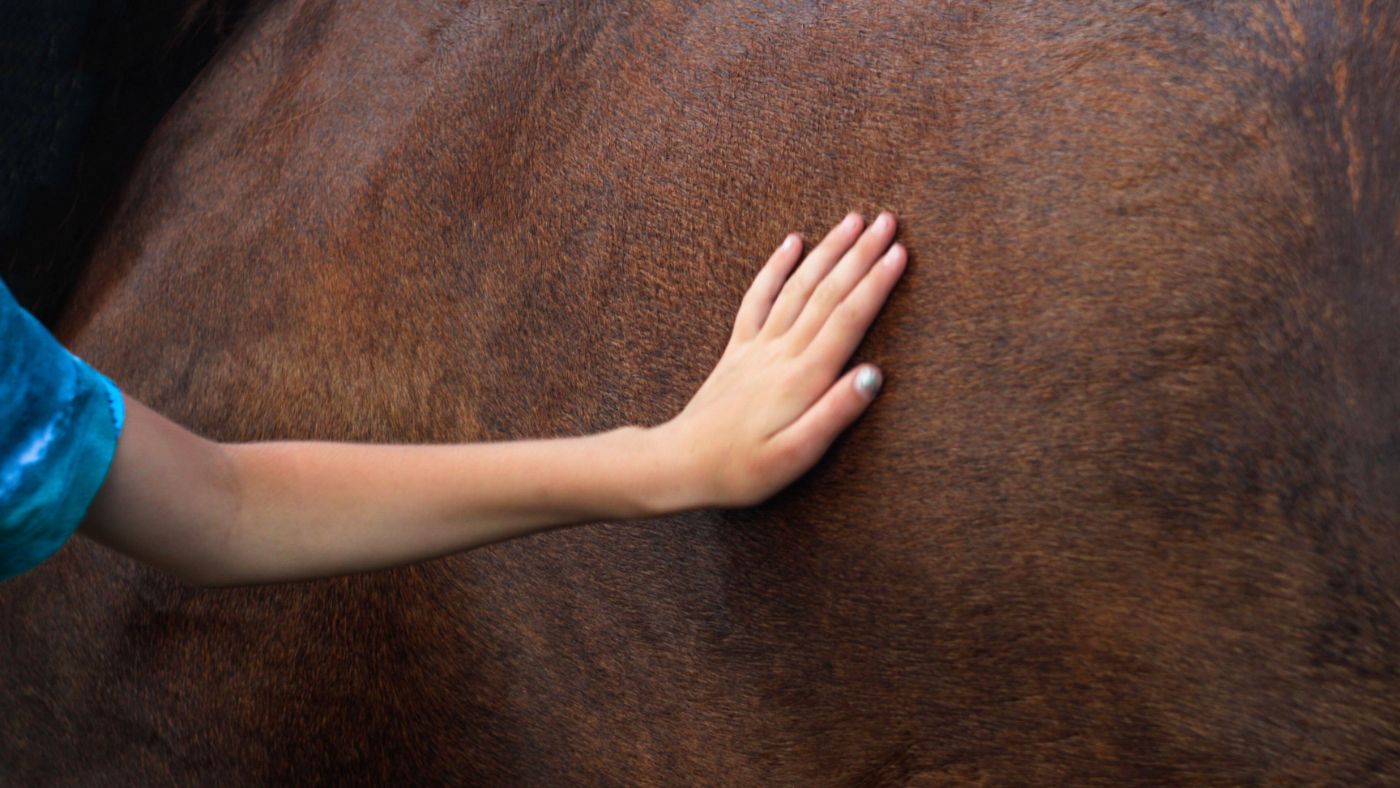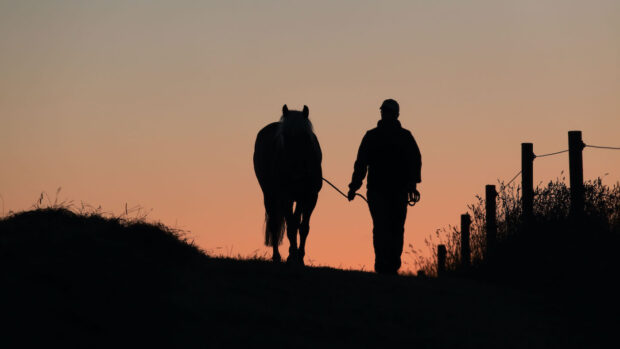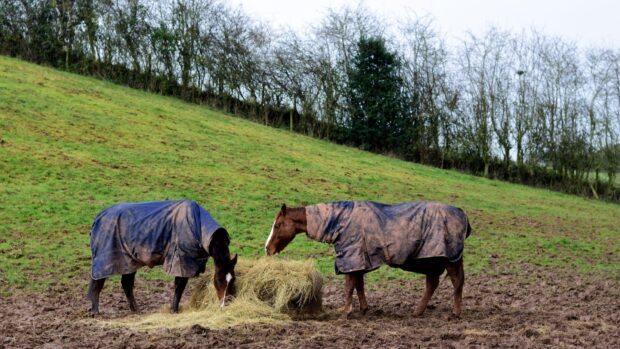When saying a final goodbye to a beloved horse, finances are likely the last thing on an owner’s mind. But if you need to make a claim and aren’t sure how, you might benefit from having equine mortality insurance explained.
Equine euthanasia, whatever the grounds, is never an easy decision. While nothing can make up for the upset of a horse’s life ending, owners with insurance may at least recoup their investment if they make a prompt, accurate claim that fulfils an insurer’s stipulations.
“The death of a horse may be an unfortunate reality at some point for owners. Of course, it isn’t one you want to have to think about,” says Francis Martin, CEO of Insurance Emporium. “However, equine mortality insurance offers policyholders financial reimbursement in the unfortunate event that their horse dies or is put to sleep by a vet on immediate humane grounds as a result of an injury, illness, or condition.”
If you’ve never had equine mortality insurance explained, you might feel unnerved at the prospect of claiming. It falls under the part of an equine insurance policy that covers death, theft or straying, which allows the policyholder to insure the value of their horse in case of death or euthanasia on humane grounds following an accident, sickness or disease. The value paid out can vary from insurer to insurer.
“It is important to check the policy. Typically, equine mortality insurance is a market value policy as opposed to an agreed value policy therefore it is important to keep the value accurate and up-to-date,” explains Harriet Walker, operations manager at KBIS.
Agria’s senior product and underwriting manager Alexandra Gilliam says successful claims for death and loss of use can pay a horses’ market value or sum insured, whichever is less, with no limit on the sum insured for death, theft or straying. She also notes owners of veteran horses can expect changes to the death and loss of use value insured as their horse ages.
“At Agria, once the horse is 16 or older, the sum insured reduces by 20% each year to a minimum of £500. However, no matter how old a horse gets, there is no change to the level of veterinary fee cover provided, for which we have no upper age limit.”
The scope of cover will vary between insurers. Harriet adds: “It is worth noting to check the cover is for accidents, sickness and disease as there may be some factors that would mean the cover is limited to accidental external injury only.”
Equine mortality insurance explained: mortality cover vs loss of use
It’s important to understand the difference between cover for death, theft or straying and permanent loss of use. Death cover will only pay out if the horse dies/is put down for incurable suffering with no available treatments. Meanwhile, loss of use cover concerns itself with the activities the horse was insured for or doing.
“Loss of use insures the horse if, due to injury, condition or illness, they can no longer be used for the activities that they are insured for and currently participating in,” says Harriet.
“In other words, the horse has a condition where he does not necessarily need to be put to sleep, but must be retired or can only be used for a lower-level activity.”
Francis Martin adds that owners may find different levels of loss of use cover. “Complete loss of use covers the event that your horse cannot undertake any functions for which it was vetted and insured, and you elect to have it put to sleep. Claims for complete loss of use might compensate the policyholder the sum insured or market value, whichever is less.
“Partial loss of use differs in that the horse can still undertake other equestrian activities than what it was intended for, or you elect to breed from or retire it. Claims might pay out a percentage of the sum insured or market value, whichever is less.”
According to H&H veterinary consultant Dr Karen Coumbe, there can be confusion between mortality and loss of use cover for those who’ve never had equine mortality insurance explained. The best thing to do is to review the policy thoroughly.
“The short answer is that mortality or death cover is much more limited,” she explains. “There is a huge variability in policies and the insured’s understanding of their level of insurance cover.”
Dr Coumbe adds that loss of use cover is more costly, and less commonly purchased, although you will have more cover. “It increases the premium as you are insuring the value of the horse against two possibilities: death and loss of use,” confirms Harriet.
When should I inform the insurer?
In any equine euthanasia case, the British Equine Veterinary Association (BEVA) has clear guidelines on humane destruction which, as Dr Coumbe explains, are “crucial to the decision-making process”. The guidelines are extensive and supply information for humane destruction that covers a range of possible circumstances.
The guidelines also advise vets on their role in an insurance claim, as well as the insured’s.
“While the owner has the primary responsibility for the claim, the vet is integral to the whole process,” says Dr Coumbe. “Most equine hospitals have office staff whose role is to specifically assist owners in resolving their claims; a lot of administration is needed.”
But at what point should an owner notify their insurer?
“Wherever possible, it is always best to notify insurers before euthanasia,” Dr Coumbe advises. “For instance, with serious colic, there may be a debate as to whether surgery is the correct course of action. In most cases, all possible treatment options must be explored prior to a claim being considered.”
Alexandra Gilliam confirms: “In a non-emergency we ask that the policyholder contact us to ensure that the horse really does need to be put down, and that those reasons fall under the BEVA guidelines.
“Our team may also ask to speak with your vet before making this decision.”
That said, the structure of the claiming process hinges on the nature of the euthanasia case.
“If a horse is suffering and there are no treatment options available, it may be euthanised immediately and the insurance sorted afterwards,” explains Dr Coumbe. An example would be a horse with a broken leg, however, even then some fractures are treatable.
“In an emergency where the horse is suffering acutely and immediate euthanasia is necessary for the horse’s welfare, we completely support the vet’s decision to act immediately and without consultation, in line with the BEVA guidelines,” echoes Alexandra.
The BEVA guidelines are currently being updated. There will be further details once this process is completed.
Will the insurer pay out?
Claiming can be an admin-heavy undertaking with numerous documents to submit and requirements to satisfy.
“The key thing is keeping the insurers informed in advance, supplying all notes and invoices and being scrupulously honest, as per any insurance claim,” Alexandra advises.
“A claim for death is reviewed on a case-by-case basis,” confirms Francis Martin. “It is unlikely to be assessed until a fully completed claim form, detailed veterinary account (report) and complete medical history is received.
“You may also be asked to provide your horse’s passport, proof of purchase and in certain situations a valuation.”
Under what circumstances is an insurer likely to pay out?
“Typical scenarios would include a horse being put down through a catastrophic injury or an acute colic,” explains Alexandra. “Cover under an Agria lifetime policy would mean that if you had previously claimed for colic treatment while insured with us and your horse dies of colic years later, you will still be insured if you have death, theft or straying and loss of use cover. This would not be the case under most annual policies, where colic and death as a result of the colic would have been excluded after 12-15 months post claim.”
Anthony Burnett, equestrian underwriter at SEIB, adds: “A policy won’t pay out if, for example, there are further treatment options available. Or, in the case of non-emergency euthanasia, the insurer’s prior agreement isn’t sought.
“More general reasons would be if the cause of the mortality was pre-existing, or if it’s excluded under the policy.”

Is a post-mortem examination required?
For Dr Coumbe, it’s another case of reading the small print. “The insured should check their policy, as many will not pay out without a post-mortem examination,” she advises.
She adds that the factors necessitating the scale of post-mortem – or indeed whether one is required – will vary.
“It depends on the condition, the circumstances, and the geographical area, as well as the value of the horse. Sometimes it is a simple veterinary practice procedure. Others require a specialist pathologist to do a very detailed examination with samples being collected.”
Anthony Burnett reiterates Dr Coumbe’s comments on checking policy wording.
“It does depend on the individual policy or insurance provider. On SEIB’s horse insurance policies, a post-mortem isn’t generally needed if the vet is certain of the cause of death/diagnosis. If they aren’t, a post-mortem report would be needed as part of the supporting evidence submitted on the claim.
Who pays for the exam? Again, it all hinges on circumstance.
“The cost of the post-mortem will generally be at the policyholder’s expense,” says Anthony. “Although some policies will cover this cost if the mortality claim is accepted.”
Equine mortality insurance explained: case study
H&H regulars will be familiar with Hovis, our long-standing equine columnist, who suffered a severe and inoperable colic in February. His insurance policy included coverage for vet’s fees and death.
“Our case was very much an emergency. At eight in the morning Hovis was fine. By two in the afternoon, I was saying goodbye to him on the operating table,” explains his owner, Karen Thompson.
Karen said she had always told herself she wouldn’t opt for colic surgery for 23-year-old Hovis should it arise, but the suddenness of Hovis’ condition – and the reassurance of knowing she had cover in place for vet’s fees – meant she and her vet decided to rush him to the local equine hospital to give him every chance of survival.
“When we arrived at the site, I was given a clipboard with a consent form to sign with an estimate at the bottom showing the kind of bill you’re likely to run up,” Karen tells us. “They were the kind of numbers that make you think ‘thank goodness I’m insured’.”
Hovis was checked in and taken away immediately for surgery, at which point Karen began lodging a claim.
“They were brilliant,” says Karen. “The woman on the line just kept repeatedly saying ‘you absolutely don’t need to do this now – you’re in the middle of it.’ Without setting any kind of deadline, they just told me to call again when I was through it.”
Minutes into the surgery, a hospital vet confirmed the damage was too severe and Hovis couldn’t be saved.
Karen called the insurer back the following day and picked up the claim precisely where she had left off.
“They were very careful to ask only what was necessary to ensure the claim was legitimate. I was not expected to give any gory details and they gave the option of answering questions via email if talking about it was too painful.”
“It’s a bit of a comfort”
Once Karen had given details of the attending vet and equine hospital, and confirmed which bill she wanted to apply her policy’s excess to, the claim was handled totally by the vets. Aside from Karen’s voluntary excess, the company covered both vet bills. Karen also received the sum Hovis was insured for within 10 days of claiming, and a contribution towards his cremation. Correspondence from the insurer stated the vets had confirmed euthanasia on humane grounds.
Karen felt her case was handled with swiftness, professionalism and sensitivity. Additionally, she felt that vet fee cover was as important, if not more so, than cover for death.
“Insurance is a personal choice, but of all the places you can save money, I wouldn’t compromise on my cover,” she said.
“I have the comfort of knowing I tried everything for Hovis. I’ll never have to live with the feeling that maybe he could have been saved. I was faced with an awful decision, but I never had to worry about whether I could afford it.”
Referring to her policy’s death cover, Karen adds that the sum paid out felt like a “bit of comfort”.
“I wasn’t expecting anything, and I’m nowhere near wanting another horse,” she says. “But having that bit of money you can put to one side for a new friend when you’re ready – and it maybe it’s a strange way of looking at it – almost feels like a gift from the horse you lost.”
She adds: “I truly believe you get what you pay for. It can be tempting to go for a cheap policy and assume you’re covered. I’d always be cautious and ensure I knew what I was covered for.”
- To stay up to date with all the breaking news from major shows throughout 2025, subscribe to the Horse & Hound website
You may also be interested in:

7 things you really need to know about equine insurance

Do you need horse rider insurance and what does it cover?

Exclusions, death cover and other common horse insurance misconceptions

Subscribe to Horse & Hound magazine today – and enjoy unlimited website access all year round




